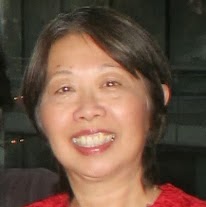Short bio & video of Robert Motherwell's work:
Robert Motherwell (b. January 24, 1915; d. July 16, 1991) was an American abstract expressionist painter. Apart from his paintings, Motherwell also made numerous drawings, prints and inspired collages of ripped paper which incorporate paint.
Robert Motherwell was originally an academic, who studied philosophy at Stanford and Harvard University, before changing his field to art and art history at Columbia University, studying under Meyer Schapiro. He wrote extensively, giving the abstract expressionist movement intellectual weight and investing his own work with literary and historical parallels.
His most famous works are a series entitled "Elegy to the Spanish Republic," a homage to Picasso's "Guernica."
The Abstract Expressionists, or New York School as they are also called, broke new ground. Although their styles and philosophies varied widely, they "were united in their revolt against conventional art and in their commitment to a spontaneous freedom of expression."[1] Robert Motherwell, married to fellow artist Helen Frankenthaler, was one of the principal members of this movement, which also included Jackson Pollock, Mark Rothko, Willem de Kooning, Philip Guston, Barnett Newman.
Here's a very moving and beautiful video of Robert Motherwell's art from 'artpopulus' with music by Leó Ferré, Ne chantez pas la mort.
"Abstract Expressionism was a movement in American painting that developed in New York in the 1940s. Most Abstract Expressionists were energetic (or 'gestural') painters. They invariably used large canvases and applied paint rapidly and with force, sometimes using large brushes, sometimes dripping or even throwing paint directly onto the canvas. This expressive method of painting was often considered as important as the painting itself. Other Abstract Expressionist artists were concerned with adopting a peaceful and mystical approach to a purely abstract image. Not all the work from this movement was abstract or expressive, but it was generally believed that the spontaneity of the artists' approach to their work would draw from and release the creativity of their unconscious minds."[2]
To take a look at other videos with my posts:
Victoria and Albert Museum, London, England & video
Damien Hirst & video
Pablo Picasso & video
Monet's Garden at Giverny & video
Vincent van Gogh Said ... & video
Major Cézanne Exhibit & video
References:
[1] Judith Clark, The Illustrated History of Art (New York: Mallard Press, 1992), 199.
[2] The Art Book (London: Phaidon Press Limited, 1996), Glossary.
Subscribe to:
Post Comments (Atom)





No comments:
Post a Comment